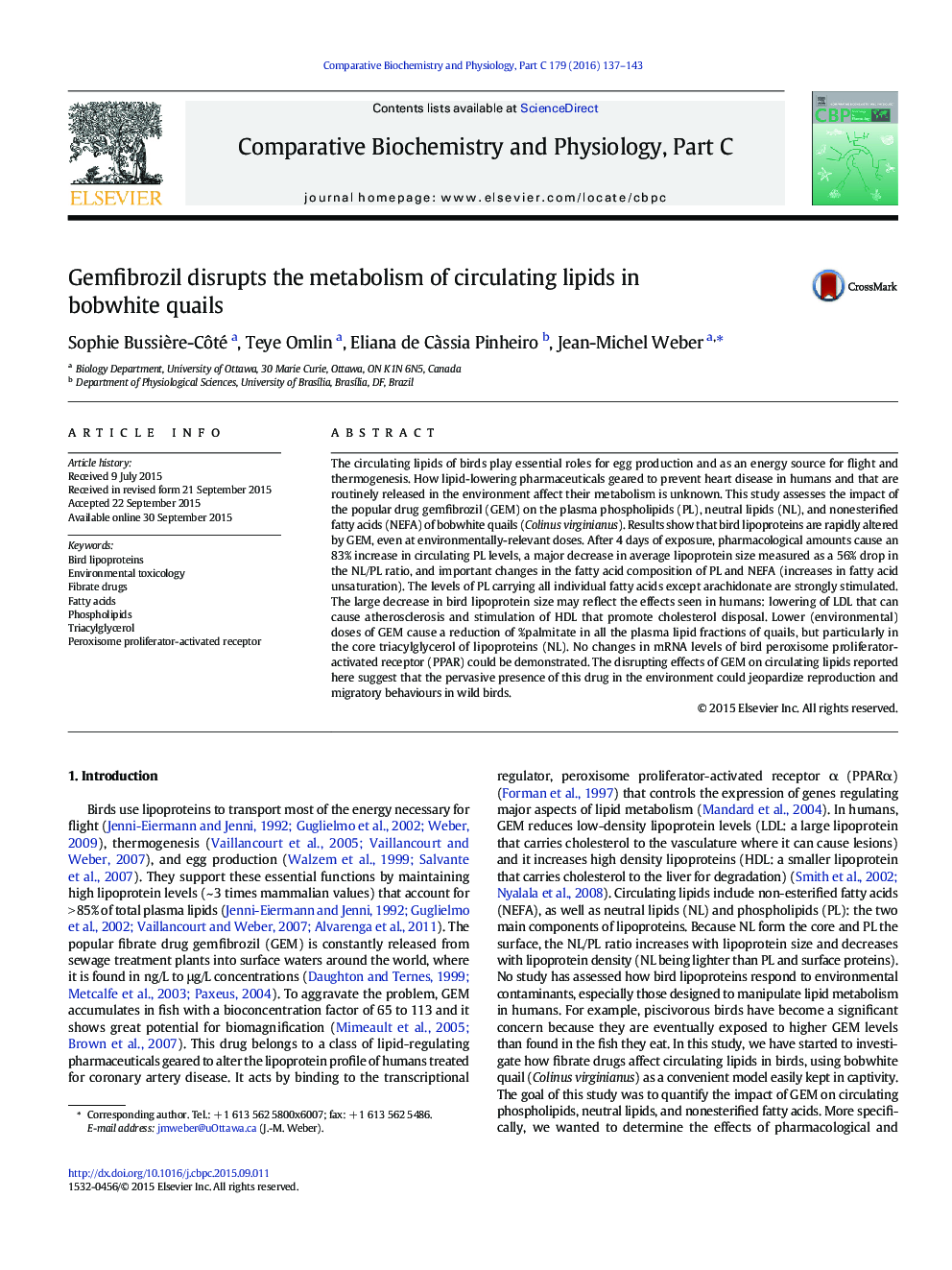| Article ID | Journal | Published Year | Pages | File Type |
|---|---|---|---|---|
| 1977175 | Comparative Biochemistry and Physiology Part C: Toxicology & Pharmacology | 2016 | 7 Pages |
The circulating lipids of birds play essential roles for egg production and as an energy source for flight and thermogenesis. How lipid-lowering pharmaceuticals geared to prevent heart disease in humans and that are routinely released in the environment affect their metabolism is unknown. This study assesses the impact of the popular drug gemfibrozil (GEM) on the plasma phospholipids (PL), neutral lipids (NL), and nonesterified fatty acids (NEFA) of bobwhite quails (Colinus virginianus). Results show that bird lipoproteins are rapidly altered by GEM, even at environmentally-relevant doses. After 4 days of exposure, pharmacological amounts cause an 83% increase in circulating PL levels, a major decrease in average lipoprotein size measured as a 56% drop in the NL/PL ratio, and important changes in the fatty acid composition of PL and NEFA (increases in fatty acid unsaturation). The levels of PL carrying all individual fatty acids except arachidonate are strongly stimulated. The large decrease in bird lipoprotein size may reflect the effects seen in humans: lowering of LDL that can cause atherosclerosis and stimulation of HDL that promote cholesterol disposal. Lower (environmental) doses of GEM cause a reduction of %palmitate in all the plasma lipid fractions of quails, but particularly in the core triacylglycerol of lipoproteins (NL). No changes in mRNA levels of bird peroxisome proliferator-activated receptor (PPAR) could be demonstrated. The disrupting effects of GEM on circulating lipids reported here suggest that the pervasive presence of this drug in the environment could jeopardize reproduction and migratory behaviours in wild birds.
